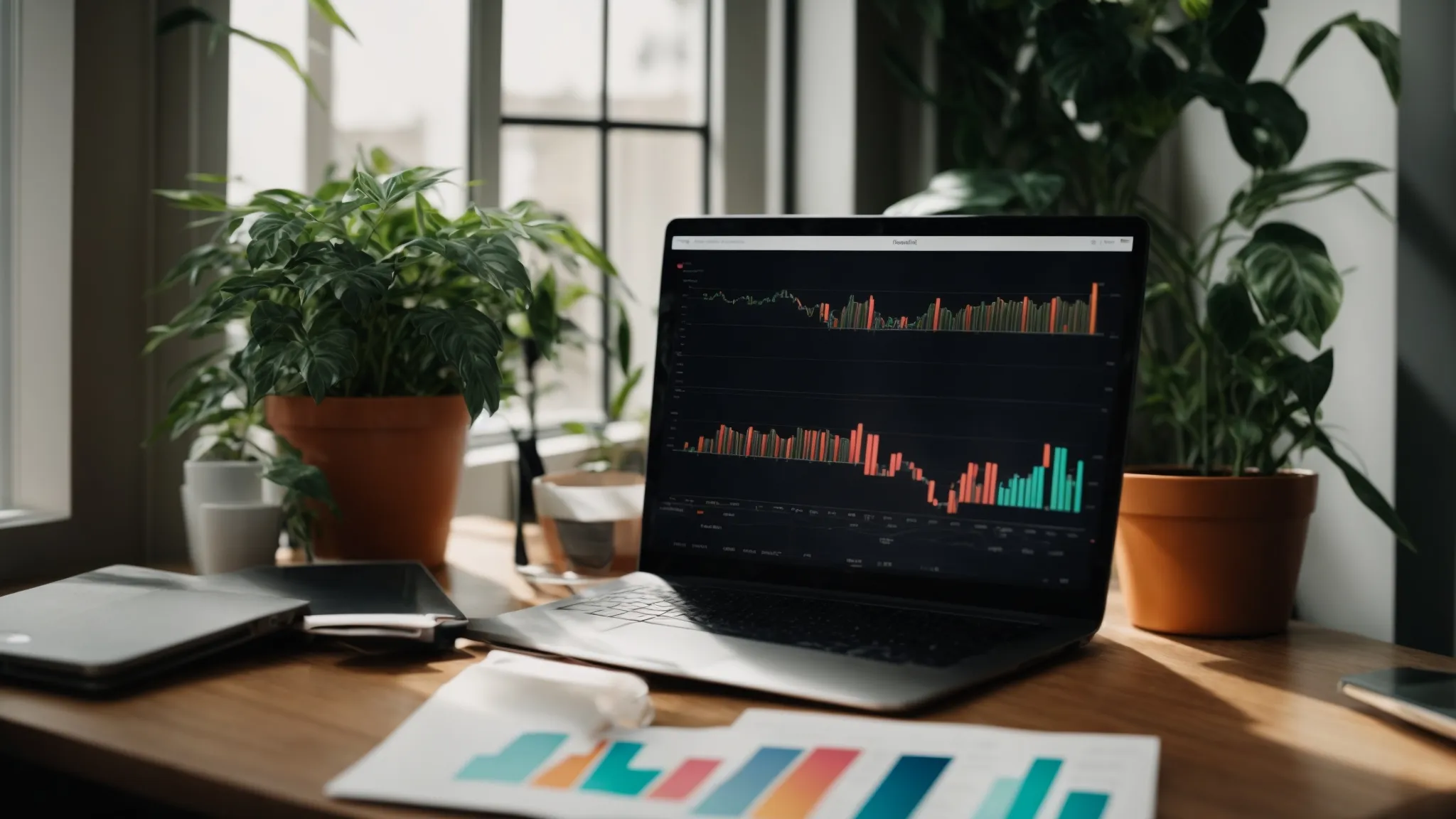
Mastering Website User Tracking: Tools & Techniques
Navigating the digital labyrinth of the internet, mastering website user tracking emerges as the linchpin for businesses seeking to understand and captivate their audience.
Like a cartographer charting unexplored territories, companies employ various tools and techniques to map the journey of every visitor that lands on their digital doorstep.
From the simplicity of Google Analytics to the intricate dance of cookie-based tracking, the quest for comprehensive insights into user behavior is both a challenge and an opportunity.
Implementing these methods unlocks a treasure trove of data, enabling personalized experiences that can enchant even the most elusive of web wanderers.
Keep reading to uncover the secrets behind effective website tracking and how it can transform your online presence.
Key Takeaways
- Website User Tracking Is Crucial for Tailoring Online Experiences and Enhancing User Engagement
- Choosing the Right Tracking Tools Involves Balancing Functionality, Ease of Use, and Alignment With Business Objectives
- Implementing Google Analytics Is a Foundational Step for Gathering Actionable Insights to Improve User Experience
- Respectful Use of Cookies Balances Personalization With Privacy, Necessitating Transparency and Legal Compliance
- Advanced Tracking Techniques Like Predictive Analytics and Cross-Device Tracking Offer a Deeper Understanding of User Behavior
Understanding the Basics of Website User Tracking

In the labyrinthine world of digital marketing, the compass that guides businesses towards success is an effective user tracking strategy.
At its core, user tracking serves as the linchpin for understanding the audience’s journey on a website.
This process, essential for websites aiming to tailor experiences and maximize engagement, involves the meticulous collection of data points from each visitor.
These data, ranging from the pages they lingered on to the buttons they clicked, unfold a narrative about preferences and behaviors.
By analyzing such data, businesses can sculpt an online presence that resonates deeply with their audience, thereby ensuring a competitive edge in the digital arena.
Defining User Tracking and Its Importance for Websites
Website user tracking is akin to the digital pulse of an online entity, recording every heartbeat through clicks, scrolls, and visits. It is the process that lets site owners observe, in real time, how users interact with their digital platforms. This observation deck gives a panoramic view of user behavior, preferences, and obstacles encountered during their digital journey.
Recognizing the significance of website user tracking is to understand the blueprint for digital success: it illuminates the path customers take, highlighting areas of interest as well as friction points. With this knowledge, a website can evolve — not through guesswork, but guided by the light of data — into a space that better serves its visitors and, ultimately, its goals:
| Metric | Impact |
|---|---|
| Page Views | Insight into popular content |
| Session Duration | Gauge of engagement levels |
| Bounce Rate | Assessment of first impressions |
| Conversion Rate | Effectiveness of calls-to-action |
Different Types of Data Collected Through User Tracking
In the quest to navigate the complexities of the digital marketplace, website user tracking collects a myriad of data types that serve as a compass. These range from quantitative analytics, such as page views and session durations, to qualitative insights, like user feedback and interaction patterns. The confluence of these data points paints a vivid portrait of the visitor’s journey, revealing not just where they trod but how they felt as they navigated through the digital terrain.
Another pivotal set of data harvested through website user tracking involves the technological breadcrumbs left by visitors. This encompasses the devices and browsers used, the geographical locations of the visitors, and even the times they are most active. With these nuggets of information, a website can morph its configuration and content, becoming a chameleon that adapts to the diverse needs and preferences of its audience, thus forging a path toward enhanced user satisfaction and loyalty.
Now that the canvas of website user tracking lies unrolled before us, a thrilling adventure awaits. Let’s embark on a quest to uncover the tools that will transform tracking from a mere concept to an actionable strategy.
Choosing the Right Tools for Effective User Tracking

In the vast expanse of the digital marketing universe, charting the course towards the zenith of analytical mastery necessitates arming oneself with the most sophisticated navigational instruments.
Embarking on the journey of selecting the optimal website user tracking tools transcends mere preference, evolving into an art form that balances functionality with foresight.
This section delves into the intricacies of choosing the right tools for effective user tracking, shedding light on the multitude of analytics tools available and their distinctive features, alongside a comprehensive guide on the pivotal considerations one must weigh before making a selection.
These insights serve as a beacon for digital marketers and website owners alike, guiding them through the densely populated landscape of user tracking technology towards making an informed, strategic tool choice.
Reviewing Popular Analytics Tools and Their Features
In the dynamic theater of digital marketing, Google Analytics stands as a towering beacon, illuminating the intricate web of user interactions with its comprehensive suite of analysis tools. Its ability to demystify the complexity of web traffic, by providing insights on user behavior, engagement patterns, and conversion metrics, makes it an indispensable tool in the arsenal of any digital marketer striving for precision in their strategy.
Amidst the plethora of analytics tools, Hotjar emerges as a revolutionary force, offering a unique lens through which website owners can observe the heat of user interactions. By leveraging heat maps, session recordings, and feedback polls, Hotjar transcends traditional analytics to reveal the emotional geography of a website, laying bare the areas that captivate the audience’s attention and those that pose hurdles, thereby enabling a more empathetic approach to user experience design.
Considerations When Selecting a User Tracking Tool
When embarking on the selection of a user tracking tool, the primary consideration should be its alignment with your specific business objectives: Does it provide the data necessary to inform your marketing and content strategies? This alignment is crucial, as the utility of a tool is inherently tied to its ability to furnish actionable insights specific to your goals.
| Consideration | Why It Matters |
|---|---|
| Integration Capability | Ensures the tool enhances rather than complicates existing workflows. |
| User Privacy Compliance | Keeps the website within legal boundaries and maintains user trust. |
| Customization & Flexibility | Allows tailoring of tracking parameters to fit unique website needs. |
| Cost-Effectiveness | Guarantees a favorable return on investment without overburdening the budget. |
Another vital aspect to weigh is the ease of use and learning curve associated with the tool. A platform that offers a steep learning curve might deter its frequent use, leading to underutilization and, ultimately, less insightful data collection. Therefore, choosing a tool that ensures both robust functionality and user-friendliness can significantly enhance the efficiency of tracking initiatives, ultimately catalyzing the achievement of comprehensive web insights.
Unlocking the secret to user insights just got easier. Let’s embark on the journey with Google Analytics, where in-depth exploration meets precision.
Implementing Google Analytics for in-Depth Insights

Embarking on the journey of implementing Google Analytics unveils a realm where every click and scroll grants foresight into the heartbeats of a website.
This powerful tool, when deployed with precision, transforms raw data into actionable insights, paving the way for an unparalleled user experience (UX).
To navigate this journey, one must first master the art of setting up Google Analytics, a step-by-step odyssey that ensures every facet of user interaction is captured and cataloged.
Following this, the quest delves deeper, interpreting the vast ocean of data harvested.
It’s here that patterns emerge, guiding website alterations not by mere intuition but by the compelling force of evidence, thereby enhancing the UX in ways previously unimagined.
Setting Up Google Analytics on Your Website Step-by-Step
To set up Google Analytics on a website, the first crucial step is creating a Google Analytics account if one hasn’t already been established. This foundational action opens the gates to a treasure trove of data, equipping website owners with the insights needed to steer their digital vessel amidst the turbulent waves of the internet:
- Navigate to the Google Analytics website and select the ‘Sign up’ option.
- Fill out the account information, providing details about the website to be tracked.
- Upon completion, Google Analytics provides a unique tracking code specifically designed for the website in question.
With the unique tracking code in hand, the next course of action involves embedding this snippet of code into the website’s pages. This critical step is akin to planting a flag on the digital landscape, asserting one’s presence and readiness to gather the rich insights that Google Analytics promises. The code should be placed before the closing tag on each page of the website one wishes to monitor, ensuring a seamless integration into the fabric of the site’s architecture.
Interpreting Data From Google Analytics to Improve UX
Interpreting data from Google Analytics to improve UX begins with deciphering the story that numbers and trends narrate about user behavior. This analytical journey transforms cryptic data into a clear roadmap for website optimization: Identifying pages with high bounce rates indicates areas where the content might not be engaging enough, or perhaps the page load times are deterrents to visitor retention.
- Examine key metrics such as bounce rate and session duration to pinpoint user engagement levels.
- Analyze traffic sources to understand where visitors are coming from and tailor marketing strategies accordingly.
- Use conversion rate data to measure the effectiveness of calls-to-action and optimize them for better performance.
Moreover, dissecting the paths users take through a website can reveal the journey’s friction points. Pages that serve as unintended exit points may need clearer navigation or more compelling calls-to-action. Armed with this intricate understanding from Google Analytics, website owners can embark on targeted improvements, making each click a step towards a more intuitive and satisfying user experience.
With the foundation laid by Google Analytics, the adventure into deeper insights begins. Next up, we’re diving into the world of cookie-based tracking to unlock a realm of personalization possibilities.
Leveraging Cookie-Based Tracking for Personalization

In the intricate dance of digital marketing, cookie-based tracking moves with a rhythm all its own, offering unparalleled insights into user behavior while navigating the fine line of privacy.
These tiny digital footprints, left behind as users traverse the vast expanses of a website, hold the key to unlocking a treasure trove of personalization opportunities.
Understanding the mechanics of how cookies capture user information paves the way for crafting strategies that respect privacy rights yet deliver bespoke online experiences.
As we delve deeper, mastering the use of cookies becomes both an art and a science, balancing ethical considerations with the pursuit of heightened user engagement and satisfaction.
How Cookies Work in Capturing User Information
As silent sentinels of the digital domain, cookies are adept at capturing a wealth of information about website visitors with a discrete finesse that belies their capabilities. Once a user navigates to a website, these small text files are stored on their device, meticulously logging actions such as page visits, time spent on each page, and interactions with specific elements on the site. This data collection, while invisible to the naked eye, is instrumental in painting a detailed portrait of user behavior and preferences.
Through the strategic placement of cookies, websites gain the ability to remember user preferences, login details, and browsing habits over time. This mechanism not only streamlines the user experience by minimizing repetitive tasks but also provides digital marketers with the insights required to customize content, offers, and advertisements in alignment with the user’s documented interests and behaviors. The interplay between cookie-based tracking and personalized content creates a symbiotic relationship that enhances user engagement and satisfaction.
Strategies for Using Cookies Without Infringing Privacy Rights
In the realm of digital engagement, using cookies respectfully means walking a tightrope between personalization and privacy: a balance that commands both precision and understanding. Website owners must ensure they are transparent with visitors about the use of cookies, explicitly detailing what information is collected and how it will be used. This transparency is not merely a courtesy but a requirement in fostering trust and securing user consent, paving the way for a privacy-compliant website experience.
Moreover, adherence to legal frameworks such as the General Data Protection Regulation (GDPR) and the California Consumer Privacy Act (CCPA) is paramount when implementing cookie-based tracking strategies. These regulations serve as guiding stars in the constellation of digital privacy, dictating that users must have the option to opt-out of cookie tracking or to consent before their data is collected. Tailoring cookie policies to these benchmarks ensures that personalization efforts do not overstep into invasive territories, thus maintaining a harmonious relationship between user experience and privacy rights.
| Strategy Component | Explanation |
|---|---|
| Transparency & Consent | Clarifying the use of cookies and securing user consent to foster trust and adhere to legal standards. |
| Legal Compliance | Following guidelines set by GDPR, CCPA, and similar regulations to ensure the respectful and lawful use of cookies. |
| User Control | Providing options for users to manage their cookie preferences, including the ability to opt-out. |
Having delved into the world of cookie-based tracking, we stand on the threshold of a new frontier. Let’s venture into the uncharted realms of advanced user tracking techniques.
Exploring Advanced Techniques in User Tracking

In the pursuit of mastering website user tracking, the exploration of advanced techniques unveils a realm where precision meets innovation. Techniques such as predictive analytics and machine learning algorithms stand at the forefront, transforming raw data into foresight about visitor behavior. This advanced approach enables websites to anticipate user needs and tailor experiences even before the user articulates them, setting the stage for a quantum leap in personalization and user satisfaction.
Dynamic tracking, a technique that adjusts in real time to user interactions, redefines the boundaries of website visitor tracking. It embodies the principle that the digital footprint of a visitor is not static but evolves with every click, hover, and scroll. By adapting to these changes instantaneously, dynamic tracking ensures that the data captured is as current as the latest interaction, allowing for an agility in response that traditional tracking methods cannot match.
Web visitor tracking also extends its reach into the realm of sentiment analysis, leveraging natural language processing to gauge the mood and emotions behind user comments and feedback. This technique unravels the layers of human complexity, offering insights not just into what users do, but how they feel about their experiences. In a landscape where emotional connection can be as crucial as functional appeal, sentiment analysis provides a key to unlocking deeper levels of engagement.
Lastly, cross-device tracking emerges as a critical component in the arsenal of advanced tracking techniques. Recognizing that the modern user navigates the digital world through a variety of screens and devices, cross-device tracking offers a cohesive view of the user journey. It bridges the gaps between sessions, ensuring that the narrative of user interaction is coherent and continuous, irrespective of the device. This comprehensive tracking paints a complete picture, indispensable for crafting unified and seamless user experiences.
Conclusion
Mastering website user tracking through the adept use of tools and techniques is paramount for digital success.
It enables businesses to gather crucial insights into how users interact with their sites, thereby informing strategic decisions that enhance the user experience.
The selection of the right analytical tools, such as Google Analytics and Hotjar, is vital; these tools must align with business objectives and comply with user privacy regulations.
Implementing tools like Google Analytics unlocks in-depth insights into user behavior, while the strategic use of cookies can personalize user experiences without infringing on privacy rights.
Moreover, leveraging advanced techniques, including predictive analytics, dynamic tracking, sentiment analysis, and cross-device tracking, allows businesses to anticipate user needs and refine their digital platforms.
Ultimately, by mastering website user tracking, organizations can craft tailored, engaging, and effective online experiences, ensuring they remain competitive in the vast digital landscape.










